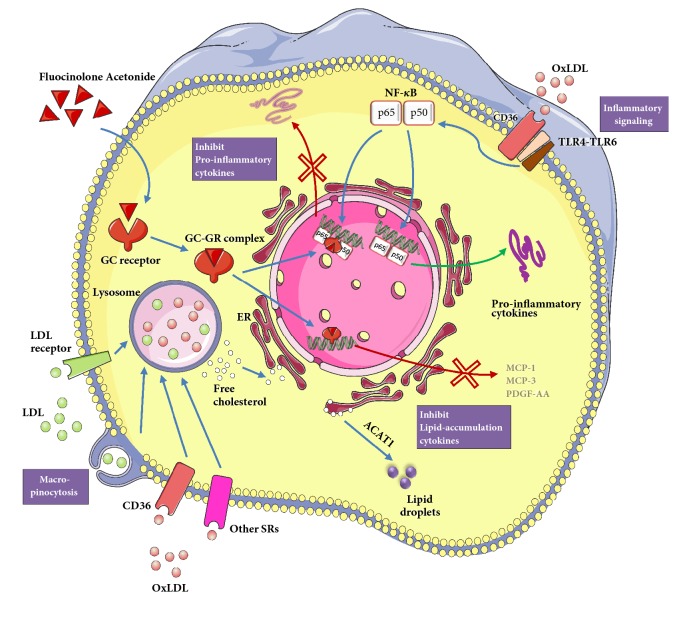Figure 6.
Proposed mechanisms of lipoprotein uptake and Fluocinolone acetonide effects on inflammation and lipid accumulation in THP-1 derived foam cells. Native low-density lipoprotein (LDL) is uptaken via LDL receptor or macropinocytosis, while oxidized LDL (OxLDL) is uptaken via CD36 and other scavenger receptors (SRs). After internalization in the endolysosomal compartment, the cholesteryl esters of native and modified LDL are hydrolysed to free cholesterol and fatty acids. Free cholesterol is then trafficked to the endoplasmic reticulum (ER), where it is reesterified by acetyl-coenzyme A acetyltransferase 1 (ACAT1) to form cholesteryl fatty acid esters. OxLDL, which signals via the scavenger receptor CD36 together with toll-like receptors TLR4 and TLR6 (CD36-TLR4-TLR6), activates nuclear factor kappa B (NF-κB) signalling pathway to produce proinflammatory cytokines. Fluocinolone acetonide, a glucocorticoid (GC), can easily diffuse through the cell membrane and bind to glucocorticoid receptors (GRs) in the cytoplasm. GC-GR complexes are rapidly translocated into cellular nuclei and physically interact with NF-κB in the nucleus to block its transcriptional activity. The GC-GR complexes also bind as homodimers to glucocorticoid response elements (GREs), specific DNA sequences in the promoter region of corticosteroid-responsive genes in the nucleus, which leads to a decreased transcription of MCP-1, MCP-3, and PDGF-AA. The reduced levels of these cytokines can help to diminish the lipid accumulation in foam cells. Modified from original artwork by Servier Medical Art (https://smart.servier.com/).

